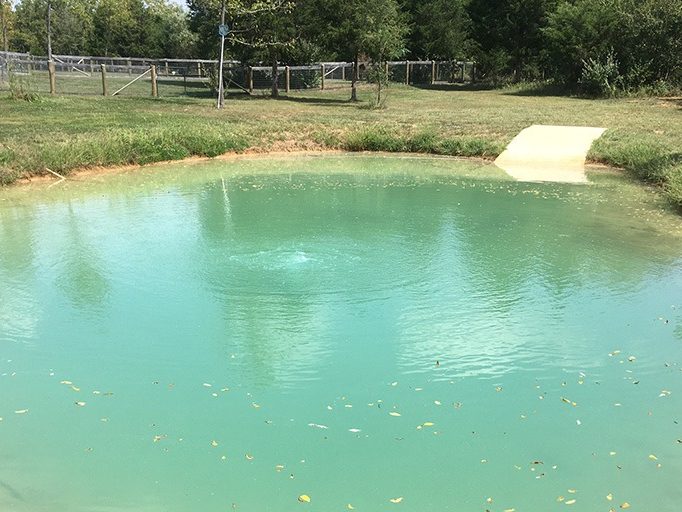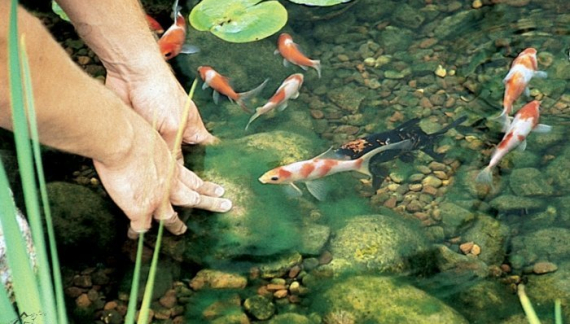Algae can be a common issue in many ponds, causing a range of problems such as green water, unpleasant odors, and even potential harm to fish and other aquatic life. Understanding the causes of algae in ponds is essential for effectively managing and preventing its growth. In this article, we will delve into the various factors that contribute to algae proliferation in ponds and explore practical strategies for addressing this common concern.
1. Sunlight
Sunlight is a primary factor contributing to the growth of algae in ponds. Algae require sunlight for photosynthesis, which provides them with the energy they need to flourish. Ponds that receive prolonged periods of direct sunlight are more prone to algae overgrowth. To address this, introducing shading mechanisms, such as aquatic plants or strategically placed shade structures, can help limit the amount of sunlight reaching the water’s surface, thereby reducing algae growth.
2. Nutrient Levels
Excessive nutrient levels, particularly nitrogen and phosphorus, can fuel the rapid growth of algae in ponds. These nutrients can enter the water from various sources, including runoff from surrounding areas, decaying organic matter, and fish waste. Implementing measures to control nutrient inputs, such as using phosphate binders and regularly removing organic debris, can help prevent the accumulation of nutrients that promote algae growth.
3. Water Circulation
Poor water circulation can create stagnant areas within a pond, leading to the buildup of nutrients and organic matter that facilitate algae proliferation. Installing aeration systems, such as fountains or air pumps, can enhance water circulation, preventing the stagnation that promotes algae growth. Additionally, the movement of water can help disrupt the development of algae colonies, reducing their ability to thrive.
4. Temperature
Warmer temperatures can accelerate the growth of algae in ponds. During the summer months, when temperatures rise, algae populations may experience rapid expansion. While temperature control in outdoor ponds is challenging, incorporating aquatic plants that provide shade and cooler areas within the pond can help mitigate the effects of higher temperatures on algae growth.
5. pH Levels
The pH levels of pond water can influence the growth of algae. Algae tend to thrive in water with relatively neutral to alkaline pH levels. Monitoring and adjusting the pH of the pond water within a suitable range can help create conditions that are less conducive to algae growth. Additionally, using pH buffers and conducting regular water testing can aid in maintaining optimal pH levels to deter excessive algae development.

Credit: aeclakes.com
6. Lack of Predators
Natural predators, such as certain species of fish and invertebrates, play a crucial role in controlling algae populations. In ponds lacking sufficient predator populations, algae can proliferate unchecked. Introducing algae-eating fish, such as koi or grass carp, can help maintain a balanced ecosystem by consuming algae and preventing its overgrowth. However, it is essential to carefully consider the introduction of new species to avoid disrupting the existing ecological balance of the pond.
7. Overfeeding and Overstocking
Overfeeding fish and overstocking ponds with excessive fish populations can lead to an accumulation of organic waste and uneaten food, contributing to nutrient overload and promoting algae growth. Establishing proper feeding practices and ensuring that the pond’s fish population is appropriately sized for its capacity can help prevent the accumulation of organic matter and reduce the nutrient load, thereby minimizing conditions favorable to algae proliferation.
8. Inadequate Maintenance
Neglecting regular pond maintenance, such as infrequent water changes, inadequate debris removal, and neglecting equipment upkeep, can create an environment conducive to algae growth. Implementing a consistent maintenance routine, including periodic water quality assessments, debris removal, and equipment checks, is essential for preventing the conditions that enable algae to thrive. By staying proactive in maintaining the pond, the risk of algae overgrowth can be significantly reduced.

Credit: www.aquascapeinc.com
Effective Strategies for Algae Control
Now that we have explored the various factors contributing to algae growth in ponds, let’s delve into some effective strategies for controlling and preventing algae overgrowth:
1. Aquatic Plant Selection
Introducing a diverse array of aquatic plants, such as water lilies, lotus, and water hyacinths, can help limit sunlight penetration, absorb excess nutrients, and compete with algae for resources, effectively impeding its growth.
2. Biological Filtration
Implementing biological filtration systems, such as biofilters and bog filters, can aid in removing excess nutrients from the water, creating an environment less conducive to algae proliferation.
3. Uv Sterilization
Utilizing UV sterilization units can help control algae blooms by disrupting the reproductive cycles of algae cells, thereby reducing their population and preventing further growth.
4. Barley Straw Treatments
Barley straw treatments can serve as a natural method for algae control, as the decomposition of barley straw releases compounds that inhibit algae growth, providing an eco-friendly approach to managing algae in ponds.
5. Beneficial Bacteria
Introducing beneficial bacteria products can aid in breaking down organic matter, reducing nutrient levels, and promoting water clarity, ultimately helping to limit the conditions favorable to algae development.
6. Regular Water Testing
Conducting regular water quality tests to monitor nutrient levels, pH, and other key parameters can provide valuable insights for implementing targeted interventions to prevent and address potential algae issues.
7. Manual Removal
Regularly removing existing algae manually using nets or algaecide treatments can help mitigate the immediate impact of algae overgrowth while other long-term strategies take effect.
8. Integrated Pond Management
Adopting an integrated approach to pond management that encompasses a combination of the aforementioned strategies, along with proper maintenance practices, can yield comprehensive and sustainable algae control results.
Conclusion
In conclusion, the proliferation of algae in ponds can stem from a combination of factors, including sunlight exposure, nutrient levels, water circulation, temperature, pH, lack of predators, overfeeding, and inadequate maintenance. By addressing these contributing factors and implementing effective algae control strategies, pond owners can effectively manage and prevent algae overgrowth, fostering a balanced and healthy aquatic ecosystem. Through proactive management and a holistic approach to pond care, maintaining clear, vibrant, and algae-free water is attainable, enhancing the overall enjoyment and sustainability of pond environments.




